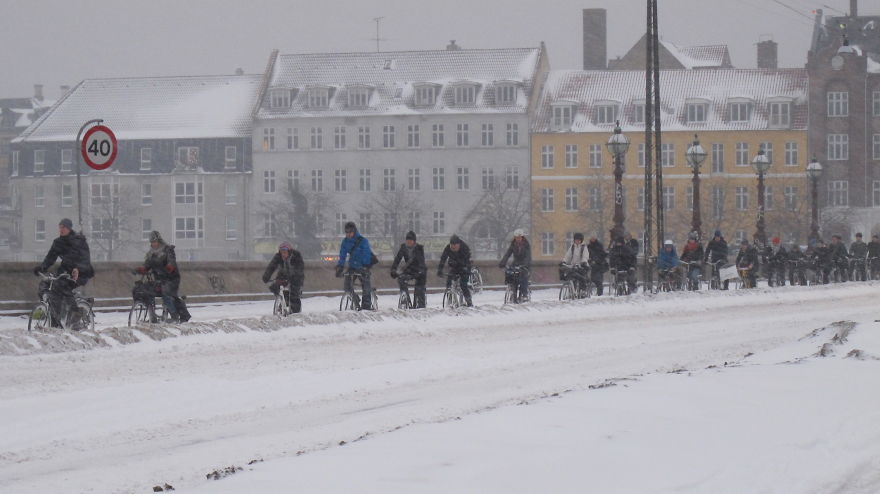The key to a comfortable and safe ride in winter is preparation. First, of course, dress for it. There is a broad range of lightweight and warm clothing for the intrepid winter cyclist that will protect you from the cold without constraining your movement. And if you’re going for a long ride, a thermos of hot chocolate, coffee or tea placed securely in your water bottle cage will help keep the chill out of your bones.

You’ll also need to properly prepare the bike for the many environmental challenges winter throws on the road or bike path. Like them or not, mudguards are very important for a comfortable – and clean – ride. They will protect you and – if you’re riding in a group – your fellow riders from the water, mud, slush and dirt your tires pick up and kick up.
Many bikes are made with eyelets and the right clearance to accept full mudguards. If you have a racing bike, you’ll need to purchase clip-on mudguards, such as the Crud Roadracer Mk3 or the appropriately named Ass Savers, which are minimalist, inexpensive and cool-looking.
Winter tires are also an excellent idea, since rain and snow tend to increase the amount of puncture-causing debris on roadways. They may slow you down a little, but they will help you ride longer and reduce the risk of (ugh!) having to repair a puncture in a snowstorm.
Wider tires provide better grip, so the 28mm Bontrager AW3 Hard-Case Lites are a good choice. According to reviews, when properly inflated they won’t slow you down too much – and they reportedly perform well in fair weather too.

Since winter tends to be dark even in daytime, it’s important that you are lit up like a cruise ship when out on the road. A flashing light in back and a powerful LED light up front are essential.
You could also add turn signals, such as the CYCL WingLights, which attach to the ends of the handlebars. They give cyclists 360° visibility in all weather conditions and allow you to signal an upcoming turn by simply tapping a button on the light. And just to make sure you are easy to see, you might want to don the “smart” Lumos helmet, which integrates lights as well as hard-brake and turn signals.
A small saddlebag is also a good idea, to carry spare clothing and emergency equipment for worst-case scenarios, such as a multitool, glueless patches, tire levers and a spare inner tube.
As the referee said to the boxers, “Keep it clean.” Regular cleaning and maintenance of the bike is perhaps the most important – and least pleasant – preparation for winter riding. Soap and water work well enough but you may want to use a degreaser and chain bath to do it properly. Check on chain wear and make sure to keep the chain lubricated. Keep the cables lubricated as well, and check them regularly for wear and damage. If you clean your bike regularly, it will mean that you won’t have to work as hard or long every time.
Finally, when you’re on the road, and riding over a fine layer of snow or slush, or the asphalt is just wet, keep your eyes open for metal surfaces in your path, such as tram tracks or manhole covers. They are very slippery when wet. I discovered that in Berlin when I rode over a frozen manhole cover and my bike slid out from under me.
So, put in the necessary time and effort and you’ll have a safe winter on your favorite transport mode.




